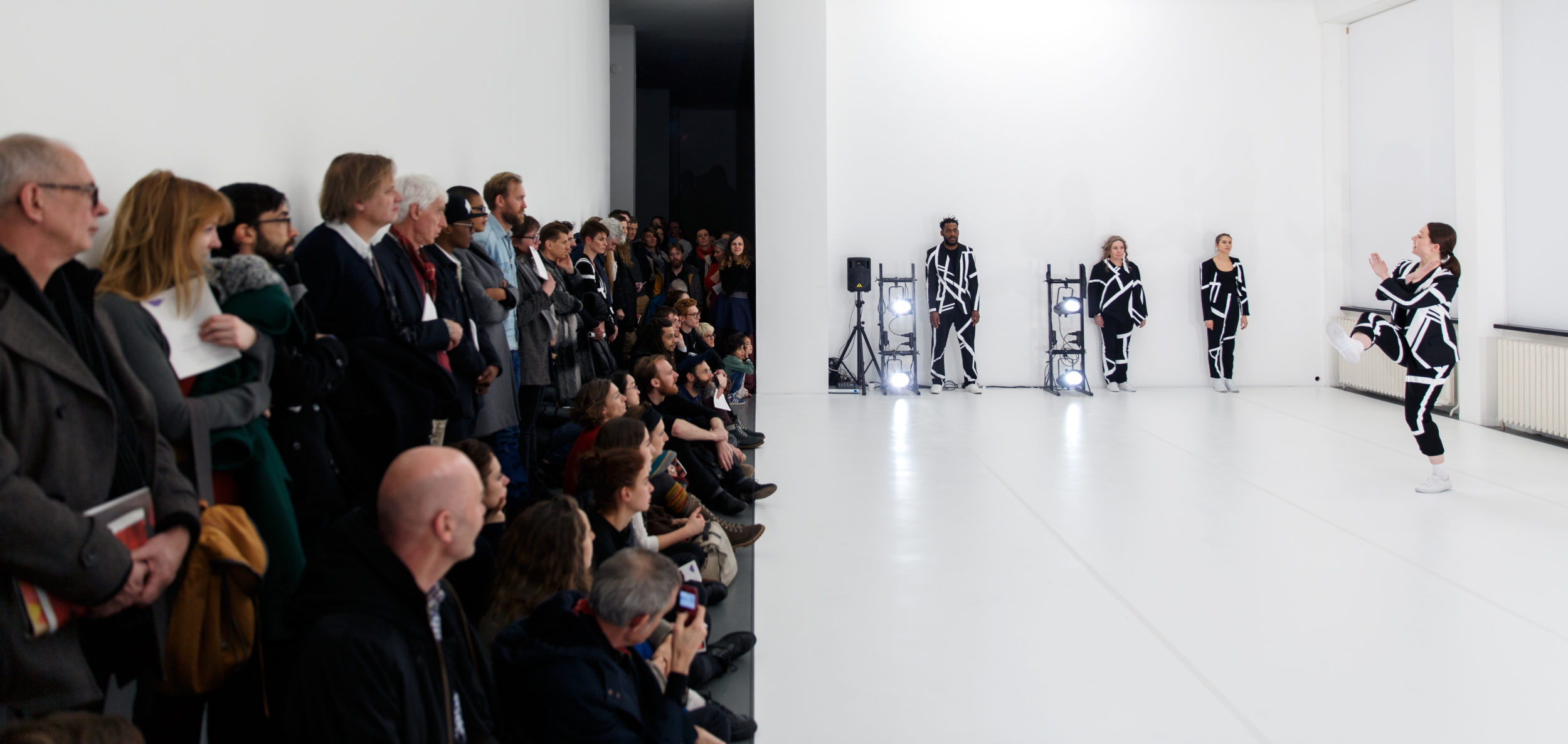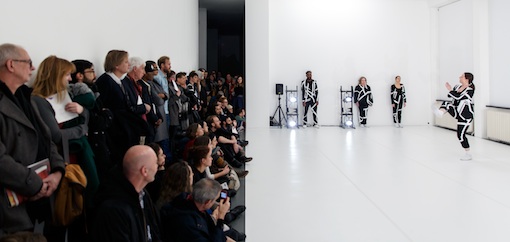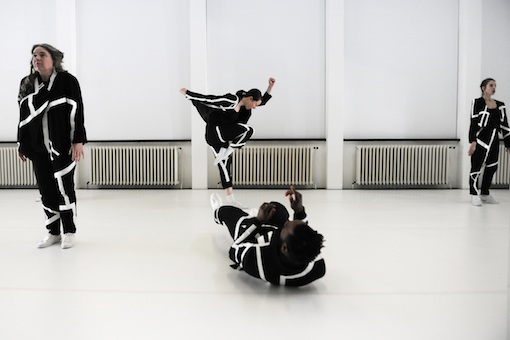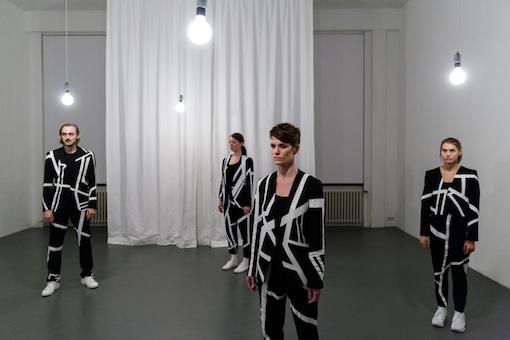
Relational Stalinism – The Musical, 2016
In opposition to the strangling of museum spaces worldwide by rampant immaterial kudzu, (i.e. Post-French Post-Conceptual Dance, Dance-We-Can’t-Call-Dance, Po-Faced Minimalism, Feel-Good Participatory Glibbery, (a.k.a. Too Many Seagulls), and Performance with no qualities whatsoever aside from its leeching of court-approved historical referents, (a.k.a. Fancy Shoulder Piggybacking)), the breed of Relational Stalinism arose in a Theater Internment Facility in Preoccupied Benelux in the late Twenty-Teens. The primary tenets of Relational Stalinism are: Emboldening Confusion, Logocratic Exuberance, and Antic Behaviorism. Relational Stalinist works use a slippery iron fist to unbutton the viewer’s buggy of self and catapult her into a realm of truths only palpable through higher forms of irrationality.
This advanced breed of world-bending adopts the degree-zero performance palette as a constraint (performers, in a room, that’s it), but pushes it out of monochrome and into a pubotany of deviously vibrant offshoots which stretch participants’ language and behavior in the service of invention.
Relational Stalinism – The Musical is an ambitious assemblage of new performances created by artist Michael Portnoy, enacted and developed with a diverse troupe of dancers, actors, singers and improvisers. Many different registers of performance will simultaneously cohabit the institution, mixing inscrutable role-play scenarios, experimental sketch comedy, hyperactive spectatorship, melodramatic operatic interlude, prog-rock micro-dance and teary-eyed theoretical soliloquy. Combining futurology with satire, this exhibition transmutes the seeds of prevalent approaches to visual arts performance as a form of generative critique.
Relational Stalinism – The Musical is the latest branch of Portnoy’s Improvement League, initiated in the Taipei Biennial 2010, which seeks to “improve” existing breeds of art-making by pruning, grafting and hybridizing certain lines of thought in a kind of conceptual horticulture.
Source: Witte de With Center for Contemporary Art Rotterdam.

at Witte de With CCA, 2016
Photo: Aad Hoogendoorn

at Witte de With CCA, 2016
Photo: Sofie Knijff

at Witte de With CCA, 2016
Photo: Aad Hoogendoorn

at Witte de With CCA
Photo: Sofie Knijff

